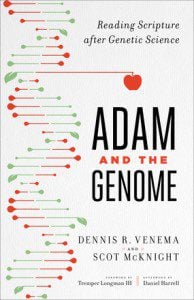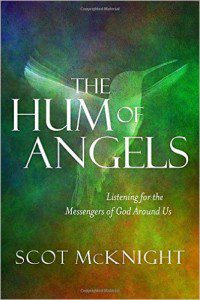 Is there a better looking, more comfortable bus stop?
Is there a better looking, more comfortable bus stop?
Vicki Beeching, finding peace after coming out: Also at CT.
Coming out can be incredibly hard for gay people to do – the fear of how family and friends will react often delays announcement for years, or even decades.
But for Vicky Beeching, the decision to tell the world she was a lesbian wasn’t just about telling her nearest and dearest, it was was also going to risk shattering her income and having her deported from the country she lived in.
For over a decade, the 35-year-old’s music has been played across America’s bible belt as a soundtrack to modern Christianity.
From the age of fourteen, the Brit had been travelling to perform the religious music she wrote at concerts and churches from her family home in Kent. …
The turning point came when she was diagnosed with an auto-immune disease called linear scleroderma morphea, aged 30, where the soft tissue in the body turns to scarring. The disease can often be linked to a point of stress – in Vicky’s case she assumed it was her hidden sexuality.
While undergoing severe hospital treatments including chemotherapy, she decided to set herself an age when she would tell people she was a lesbian – that age would be 35…. She said: ‘So that’s why I have decided to come out now, because I made a decision when I was very ill about coming out when I turned 35….
One of the best messages was from Katherine Welby and her father Justin Welby, the Archbishop of Canterbury, who Vicky knows very well. She said: ‘Katherine told me told me that the whole family have said that I am just as welcome at their dinner table and they still love me. I’m actually going round there for dinner next week.’ …
[CT]: Beeching “still considers herself an evangelical,” writes veteran British religion reporter Ruth Gledhill after interviewing the singer, “although she no longer attends charismatic evangelical services and now prefers the more traditional services of London’s main cathedrals.”
“I am not angry with the Church, even though it has been very difficult,” she told Gledhill. “The Church is still my family. Family do not always agree or see eye to eye. But family stick together, and I am committed to being part of the Church, working for change.”
WaPo and the Oxford English online edition:
Among the other August additions to the online dictionary: “SMH,” “cray” (for which you can thank Kanye West and Jay Z), “neckbeard,” “binge-watch,” “hate-watch,” “side-boob,” “adorbs,” “listicle,” “mansplain,” “hot mess,” and “acquihire.” Other revelations: “side boob” is apparently 10 times more common in the United Kingdom than it is in the States, but we are significantly fonder of using “adorbs.”
Insert obligatory moaning of the devolution of English here: The end is nigh. Weep for the demise of the English language and the fast-approaching Armageddon of American communication. Pale riders include hashtags and emoji.
Ohhh, maybe it won’t be so bad. Better emoji — as long as they’re diverse — and hashtags than wheezes and grunts, no?
 Captain Ron Johnson, of Ferguson Missouri, hugging Ferguson citizens in his plea for peace.
Captain Ron Johnson, of Ferguson Missouri, hugging Ferguson citizens in his plea for peace.
The 100-foot-high, oval-shaped citadel of Erbil towers high above the northern Mesopotamian plain, within sight of the Zagros Mountains that lead to the Iranian plateau. The massive mound, with its vertiginous man-made slope, built up by its inhabitants over at least the last 6,000 years, is the heart of what may be the world’s oldest continuously occupied settlement. At various times over its long history, the city has been a pilgrimage site dedicated to a great goddess, a prosperous trading center, a town on the frontier of several empires, and a rebel stronghold.
Yet despite its place as one of the ancient Near East’s most significant cities, Erbil’s past has been largely hidden. A dense concentration of nineteenth- and twentieth-century houses stands atop the mound, and these have long prevented archaeologists from exploring the city’s older layers. As a consequence, almost everything known about the metropolis—called Arbela in antiquity—has been cobbled together from a handful of ancient texts and artifacts unearthed at other sites. “We know Arbela existed, but without excavating the site, all else is a hypothesis,” says University of Cambridge archaeologist John MacGinnis.
Congrats to Maryam Mirzakhani!:
(CNN) — For the first time in history, a woman has received the highest honor in mathematics, often nicknamed the Nobel Prize of mathematics.
Since it was established in 1936, the Fields Medal had gone only to men, until Wednesday, when Maryam Mirzakhani received it in Seoul, South Korea, from the International Mathematical Union.
“This is a great honor. I will be happy if it encourages young female scientists and mathematicians,” Mirzakhani said, according to a statement from Stanford University, where she is a professor.
For those of us less versed in the uppermost echelons of mathematics and geometry than Mirzakhani, it’s mind-twisting to understand the abstract accomplishments that got her field’s highest recognition.
Mirzakhani has delved into the depths of geometry, helping bring unexpected order to an area that many of her colleagues considered chaotic and hardly tamable. And her peers have found this very exciting.
The answers Bert Vogelstein needed and feared were in the blood sample.
Vogelstein is among the most highly cited scientists in the world. He was described, in the 1980s, as having broken into “the cockpit of cancer” after he and coworkers at Johns Hopkins University showed for the first time exactly how a series of DNA mutations, adding up silently over decades, turn cells cancerous. Damaged DNA, he helped prove, is the cause of cancer.
Now imagine you could see these mutations—see cancer itself—in a vial of blood. Nearly every type of cancer sheds DNA into the bloodstream, and Vogelstein’s laboratory at Johns Hopkins has developed a technique, called a “liquid biopsy,” that can find the telltale genetic material.
The technology is made possible by instruments that speedily sequence DNA in a blood sample so researchers can spot tumor DNA even when it’s present in trace amounts. The Hopkins scientists, working alongside doctors who treat patients in Baltimore’s largest oncology center, have now studied blood from more than a thousand people. They say liquid biopsies can find cancer long before symptoms of the disease arise.
Craig Allert asks the question: Is evangelicalism tied to the historical critical method so much that a historical referentiality is the only way it can read the Bible?
I want to ask a question of this approach—Is that all? HC [historical critical method] is important for biblical interpretation. What appears to be happening, however, is the elevation of this approach by some Evangelicals as almost an end in itself—that seeking the original context is the end which we Christians seek in our Bible reading and study of Genesis. Much of the literature to which I refer does a fine job of ushering the reader into the world of Genesis. But is that why we Christians consider Genesis Holy Scripture?
Evangelical writers Johnny Miller and John Soden illustrate what I mean in their book In the Beginning…We Misunderstood.[6] The authors argue that the most important question the interpreter of Genesis asks is “What did Genesis mean to the original author and hearers?”[7] This is equated with the meaning God intended and it is only after interpreters gain this understanding that they can move on to other, more modern, concerns. This is “genuine biblical faith.”[8] Even though the Bible is God’s Word, the authors insist that God’s Word was not given directly to us. God did intend to speak to us through it, but “our understanding of God’s revelation must be understood through the original written and historical context. It cannot mean something different from what it meant to the original audience.”[9] The method endorsed here is one which the authors believe anyone can pursue.[10]…
If this really is the correct method for biblical interpretation, it seems to me that the Apostle Paul should be taken to task for how he interpreted the Old Testament. His applications of some of the Psalms, for example, really do not take the original context or hearers into account at all. He allowed later revelation (the incarnation of Christ!) to cloud his interpretation of the Old Testament texts he used. Further, the first interpreters of the Bible, the Church Fathers, followed Paul in his Christological interpretation.
Will we call them Tat Bats?
In the future, sensors placed in a temporary tattoo – or even inside your underwear – could use your sweat to power small electronic devices. The tiny, cheap biobatteries can harvest enough power to power wristwatches and LED lights. Future designs could make bulky batteries on wearable devices a thing of the past.
Researchers at the University of California San Diego reported on their biobatteries at a recent meeting of the American Chemical Society. “Usually with wearable devices, you require a big battery,” Joseph Wang, distinguished professor of nanoengineering and head of the research team said. But these tiny temporary tattoos present an alternative.
People are often surprised to discover that two of the largest Christian kingdoms in the medieval world were in Sudan in northeast Africa. Ibn Selim Al-Aswani, an Arab traveller, visited Sudan in the 10th century AD and described the region north of Old Dongola, capital of the medieval kingdom of Makuria, situated roughly 750 kilometres upstream of Aswan Egypt, as an area of ‘about thirty villages, with beautiful buildings, churches and monasteries, many palm-trees, vines, gardens, cultivated fields and broad pastures on which one can see camels’.
Further to the south, Soba East, capital of the medieval kingdom of Alwa, located near modern-day Khartoum, was said to have ‘fine buildings and large monasteries, churches rich with gold and gardens’. This conjures up quite a romantic picture of medieval Sudan and provides us with an insight into the world in which the Sudanese female mummy, now in the exhibition Ancient lives, new discoveries, had lived. Was medieval Sudan as idyllic as it sounds?
From Ron Artest to Metta World Peace to Panda Friend.
Metta World Peace is taking his talents to China this season, and he’s commemorating the move by adopting yet another new name: Panda Friend. No, we’re serious. China Daily reported Thursday that the artist formerly known as Ron Artest will take on the new moniker in conjunction with his leap from the NBA to the Chinese Basketball Association. World Peace hasn’t confirmed the new name, but he tweeted earlier this week that change is in store.











